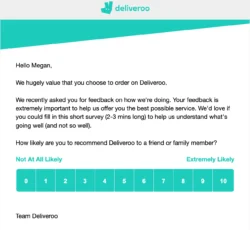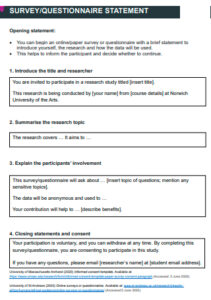Have you ever sent out a survey, eagerly awaiting responses, only to find the feedback trickling in slowly or not at all? It’s a common scenario. Gathering insights from your audience is invaluable, whether you’re a business owner, a researcher, or just someone looking for opinions. The real challenge often isn’t just creating the survey, but ensuring people actually complete it and, crucially, that you follow up effectively.
That’s where a well-crafted follow up strategy comes into play, especially when you’re aiming for a comprehensive understanding. Knowing how to prompt participants to finish their thoughts and provide detailed feedback can significantly boost your data quality. It’s about more than just a reminder; it’s about guiding them through the process and showing you value their input at every stage.
What Makes an Effective Follow Up Complete Survey Template?
Crafting a survey is one thing; ensuring its completion and then effectively following up is another art entirely. An effective follow up complete survey template isn’t just about reminding someone they started a survey; it’s about providing a gentle nudge that encourages them to revisit and finish their responses. It focuses on clarity, value, and ease of access, making it simple for participants to pick up exactly where they left off.
The core principle behind such a template is to respect the participant’s time while subtly reinforcing the importance of their input. This means the message should be concise, to the point, and immediately recognizable as a reminder related to their previous engagement. Ambiguity will only lead to deletion, not completion.
Key Elements to Incorporate
- A clear, concise subject line that immediately identifies the email’s purpose.
- Personalized greeting to make the message feel less automated and more direct.
- A friendly reminder of the survey’s purpose and its value to the participant or your organization.
- A direct, easy-to-find link that takes them exactly to where they left off in the survey.
- An estimate of how much time it will take to complete the remaining sections.
- An assurance of data privacy and anonymity, if applicable.
- A clear call to action, encouraging them to complete the survey now.
- Information on when the survey closes, creating a gentle sense of urgency.
By including these elements, you not only make it convenient for the participant but also re-engage their interest. It’s about more than just a task; it’s about inviting them back to contribute to something meaningful, ensuring your data collection efforts don’t fall short due to incomplete responses. Each piece of the template serves a specific purpose in motivating completion.
Maximizing Your Survey Completion Rates
Once you have a solid follow up complete survey template in hand, the next step is to strategize its deployment for maximum impact. Timing is crucial. Sending a follow-up too early might seem pushy, while sending it too late might mean the participant has completely forgotten about the survey. Generally, a good window is 24-48 hours after the initial uncompleted attempt, allowing enough time for them to process and act on the first invite.
Consider the channel through which you send your follow-up. Email is often the primary choice, but don’t overlook other platforms if appropriate for your audience. If your survey is tied to an app, an in-app notification might be highly effective. For SMS-based surveys, a quick text reminder could yield great results. Tailoring the channel to your audience’s typical engagement points increases visibility and response potential.
Another powerful tactic is to personalize your follow-up messages beyond just their name. If possible, reference the specific survey they started or even a topic they might have already responded to. This shows you’re aware of their individual journey and makes the message feel less generic. Reminding them of the benefit of their feedback, whether it’s improved services, better products, or contributing to a cause, can also be a strong motivator.
Finally, remember that the goal isn’t just completion, but meaningful completion. While reminders are key, ensure the survey itself remains engaging and not overly long. Continuously analyze your completion rates and tweak your follow-up strategy based on what you learn. A dynamic approach, where you adapt your template and timing based on real-world performance, will always yield better results than a static one.
Ultimately, the success of any data collection initiative hinges not just on asking the right questions, but on ensuring those questions are answered. Developing a robust strategy around getting those final responses is just as important as the initial survey design. It reflects a commitment to gathering comprehensive insights and respecting the effort participants are willing to put in.
By thoughtfully designing your follow-up communication, you empower your audience to fully contribute their valuable perspectives. This dedication to completeness transforms partial feedback into actionable data, providing a clearer picture and enabling more informed decisions. It’s about building a bridge between curiosity and clarity, one complete response at a time.



